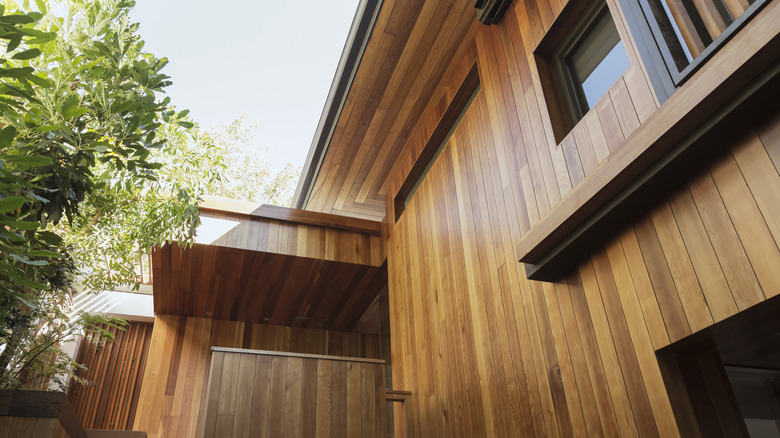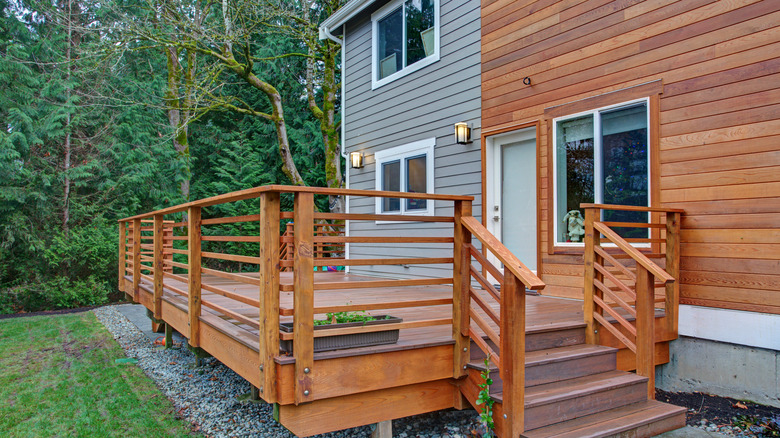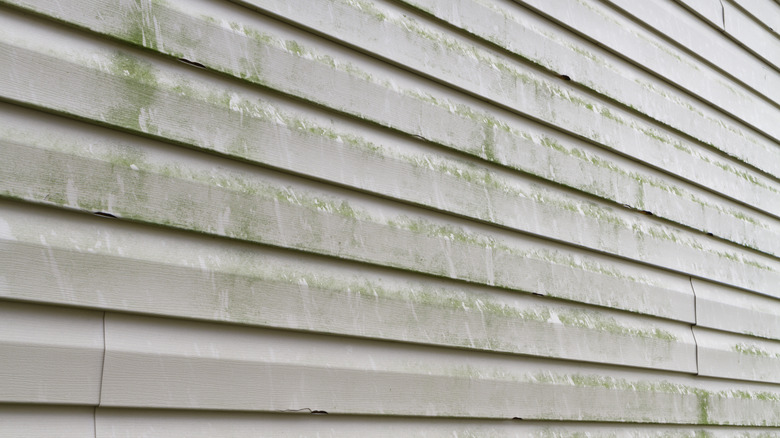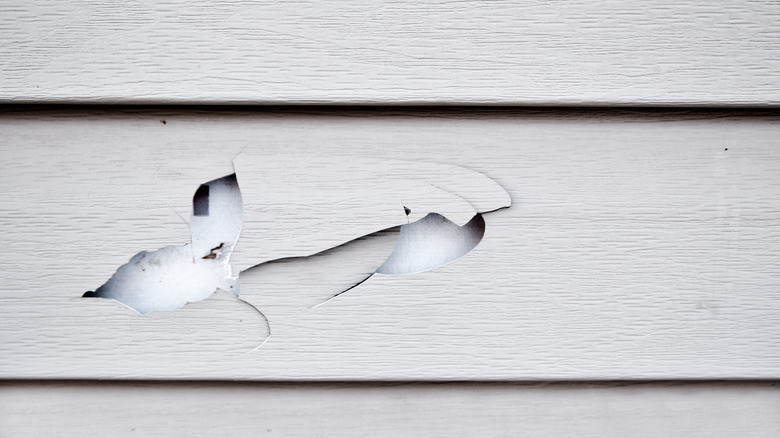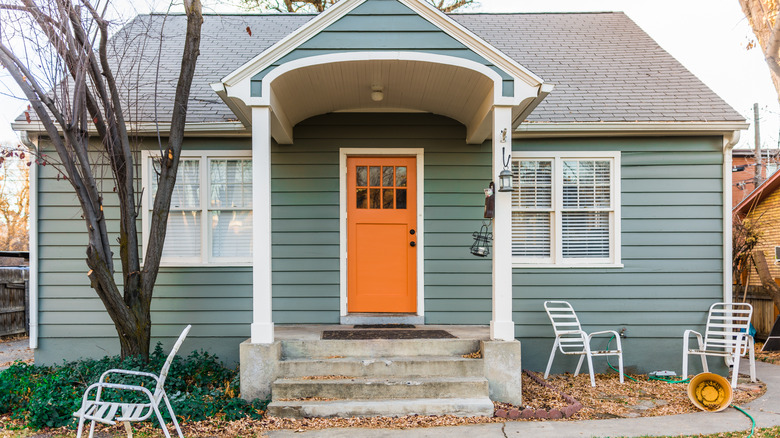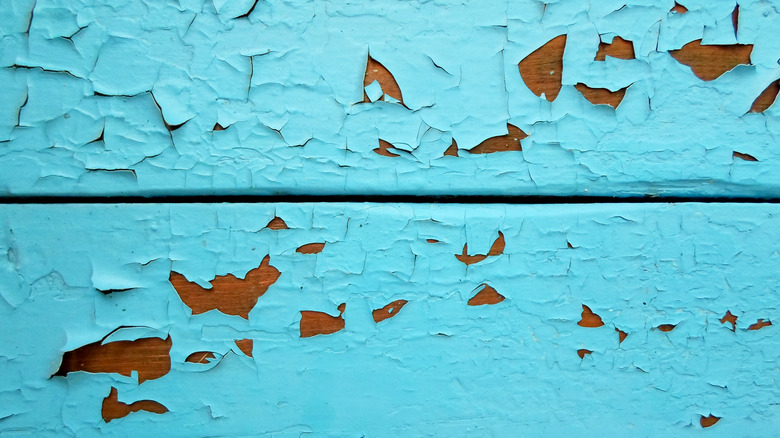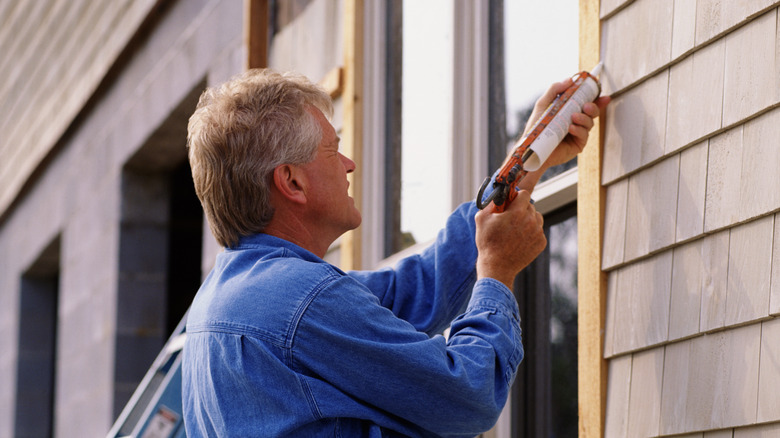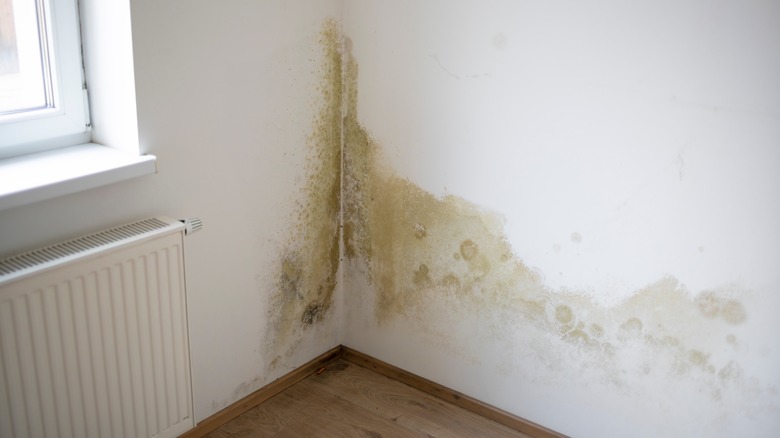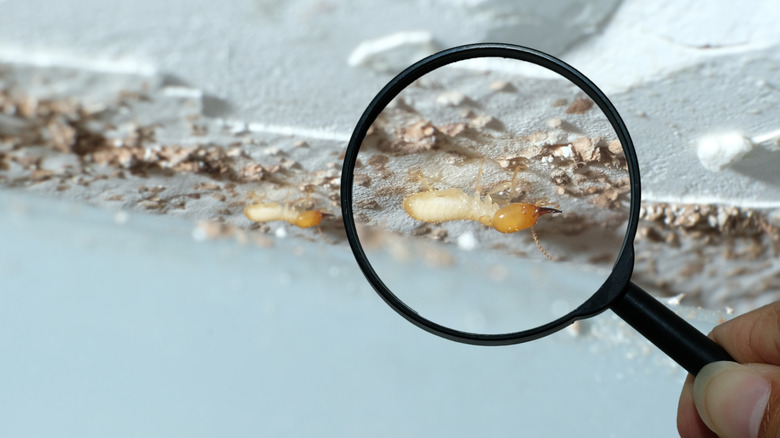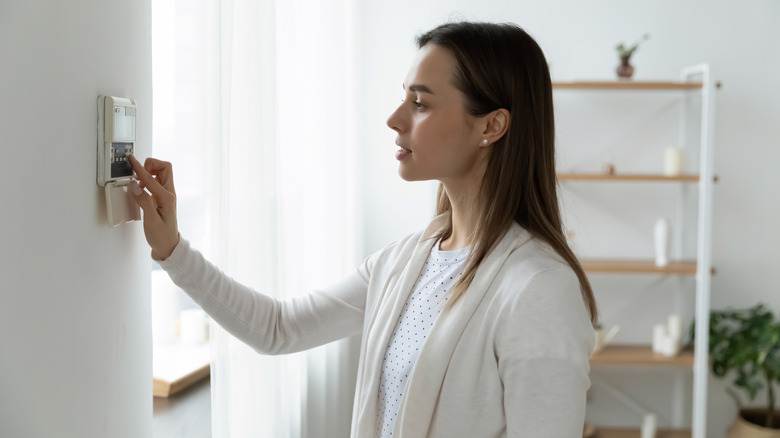Here Are The Signs Your Siding Is Too Old
The siding on your house performs multiple functions. It contributes to your home's curb appeal as well as providing protection, energy efficiency, and structural integrity for the house. But when you see signs that the siding is too old, it may be time to replace it.
According to Siding Authority, the siding on your home should last from 15 to 50 years, depending on the type of material. However, numerous factors may affect the condition of your siding, and it's important to recognize when it's too old to function properly. Harsh climate, UV rays of the sun, and extreme weather events can damage your siding. The invasion of insects or rodents might become a problem, and the growth of mold and mildew on your siding can pose a health hazard. Certain types of fungus growing in your siding can produce wet rot and dry rot. When you know the signs that your siding is too old, you can make regular inspections of your home's exterior to determine when it's time for siding replacement.
Your wood siding shows signs of rot
Old wood siding is prone to rotting over time. Areas of your home's exterior that are not covered by large soffits and overhangs may be the first places where wet rot shows up. With constant exposure to rain, snow, sleet, and humidity, the wood siding stays damp much of the time. This condition leads to the growth of a fungus that feeds on the wood and causes wet rot. Additionally, dry rot is caused by a different type of fungus that may damage the wood siding in areas where moisture retention is not prevalent.
Signs of wood rot include cracked and peeling paint, visible cracks and holes in the wood, and a spongy texture. Check for wood rot in your siding by poking it with a screwdriver to test for soft or crumbling material. In many cases, you can poke your finger directly into the rotting wood. If you discover that your wood siding is rotting, you'll know it needs to be replaced.
You see signs of mold and mildew growth
When moisture is combined with a lack of light, it creates the perfect environment for mold and mildew to grow. This can be a problem on wood, vinyl, and metal siding materials, especially in the shaded areas of your home's exterior. If you live in a region where the climate is prone to high humidity, your siding is particularly susceptible to damage from mold and mildew growth.
Mildew may appear as a powdery, light-colored material on the surface of your siding. Mold takes numerous guises, ranging in color from green to black or red. It's texture may be fuzzy or slimy. While mildew is easier to remove from the surface of your siding, mold can cause serious structural damage to your home. However, both mildew and mold should be treated as health hazards for your home's occupants. They cause allergic reactions such as sneezing, runny nose, itchy eyes, and irritation to the throat and lungs. When old siding develops significant problems with mold and mildew growth, it may be time to replace it.
Pieces of siding are loose, damaged, or missing after a storm
Extreme weather conditions such as storms, high winds, rain, and hail can cause damage to your siding. Old siding that has endured years of wear may not hold up to these stressors. If you're picking up pieces of siding from your yard after a storm, it might be a sign that your siding is too old. Even if the siding does not come off the house, it may be cracked, chipped, or dented during harsh weather events. These conditions can lead to the introduction of moisture that facilitates the growth of damaging rot and mold.
If your siding is too old, it may be that the nails are rusting and popping out. Normal expansion and contraction due to temperature and humidity changes can cause nails to loosen. After a rain, you may see visible rust streaks on your siding from the old nails. When the old nails lose their ability to hold the siding in place, it becomes likely that storms and high winds will cause further damage.
The siding is warped, cracked, or bulging
Your home's siding is affected by weather conditions, heat, moisture, and the movement of natural contraction and expansion. Trapped moisture from rain, snow, and humid conditions causes warping and bulging. Wood siding as well as the wood structure under vinyl and metal siding may swell and contract due to its moisture content.
Vinyl siding warps from contraction during cold winters followed by expansion due to high heat in the summer. In hot weather, vinyl siding may show signs of bubbling or blistering from the sun. Additionally, vinyl siding cracks and peels after years of exposure to the sun's ultraviolet (UV) rays. It may even melt in high heat and sunny conditions. Even the reflection of heat and strong sunlight from glass windows can cause vinyl siding to warp and melt. When you notice that vinyl siding is beginning to twist, bulge, or droop, it's time to replace it. Left uncorrected, these conditions can lead to water damage beneath the siding's surface resulting in structural damage to your home and the need for expensive repairs.
The paint color fades, chips, blisters, and peels
If your home's exterior paint job is not lasting as long as it should, the old siding underneath may be the culprit. According to CertaPro Painters, you should paint your wood siding every 3 to 7 years. For aluminum siding, you should give it a fresh coat of paint every 5 years. But if your siding is old, the paint may fade and peel long before its normal lifespan is up. With old siding, moisture collects behind the boards and works its way to the surface, pushing outward on the paint film until it cracks and peels.
Many homeowners prefer vinyl siding because it does not require painting every few years. However, old vinyl siding exhibits significant fading due to sun exposure. The vinyl siding fades more drastically on the exterior walls that are exposed to the sun than on the walls that are protected by overhangs or shaded by trees. The faded color is not only a cosmetic issue, but it's also a clue that the siding is becoming weaker due to the UV rays of the sun.
Your siding's caulking and seams are cracked
Caulk is a waterproof material that seals and protects your home's structure by filling the seams and joints where the siding meets windows, doors, and other parts of the architecture. Therefore, caulking is a necessity to protect your home from water and weather damage. But cracks in the caulking and seams may be a sign that your siding is too old.
Good quality caulk is designated to last 50 years, but when the siding is too old, it sets up conditions that cause the caulk to fail. The problem lies in the natural movement of siding due to expansion during warm weather and contraction during cold weather. Most caulks do a good job of sealing cracks that measure no more than ¼ inch in width. However, if your siding is too old, the natural shrinking and swelling processes may produce cracks that are too wide for the caulking to be effective. In the case of old siding, it might be useless to reapply caulk, as the new caulk will fail due to the existing conditions. Instead, it might be time to replace the siding before applying new caulk to the seams and joints.
Inside the home, you notice signs of moisture damage
If you notice water stains and other signs of interior moisture, it may be that your old siding is not protecting the house as well as it should. Due to years of weather and wear, the siding ages to a point where water is seeping in. It's vitally important to address interior moisture damage, as it will only get worse and lead to structural damage that requires complicated repairs. Additionally, unchecked moisture damage inside the home results in health hazards for the occupants due to mold and fungus growth.
Signs that water is getting in from outside your home include damp stains on walls, peeling paint and wallpaper, a musty odor, and the growth of mold and mildew. In some cases, a wall may bulge or warp. If you notice these conditions, your old siding might be the source of the problem. When pieces of siding are damaged or missing, water from rain and snow seeps into the interior walls. Even if there are no pieces of siding missing, the caulking cracks produced by the expansion and contraction of old siding provide places for water entry.
Termites or other pests have damaged your siding
The siding on your home is susceptible to invasion by insects and varmints, and your old, rotting siding puts out the welcome mat for these creatures. Termites, birds, squirrels, and woodpeckers can damage your siding. In the case of insect infestation, it may be difficult to see the problem before significant damage is done. Termites, carpenter ants, carpenter bees, and powderpost beetles can tunnel through your wood siding and feed on it. Look for small holes in the siding to detect whether the insects are present.
Woodpeckers pound holes in wood siding and attack vinyl siding until it cracks and dents. They are trying to dine on the insects that live in the wood siding or the underlying structural wood. Additionally, you might notice places where squirrels, mice, or rats have gnawed on your old siding, creating gaps and holes. These creatures are probably trying to chew the siding enough to make cozy nesting places.
You're having to pay higher energy bills
Siding and insulation work in tandem to make your home energy efficient. Even when your home is insulated and you've taken steps to seal around windows and doors, old siding can fail to provide the energy efficiency you need. As a result, you might see an increase in costs for heating and air conditioning.
When old siding is weakened by years of wear, it loses its ability to aid your insulation in the management of air transfer from outdoors to indoors and indoors to outdoors. Ideally, the siding should protect the insulation by blocking heat and the UV rays of the sun as well as keeping moisture away from the insulating material. But old siding may not live up to those requirements. When your siding is too old, it might be necessary to install additional insulation and new siding to make your home more energy efficient.
Once you know the signs that your siding is too old, you're equipped to make wise decisions about whether to repair, repaint, or replace your siding when the need arises. Although replacement might appear to be a last resort, it can be the best solution to make your home safer, healthier, more structurally sound, and more energy efficient.
